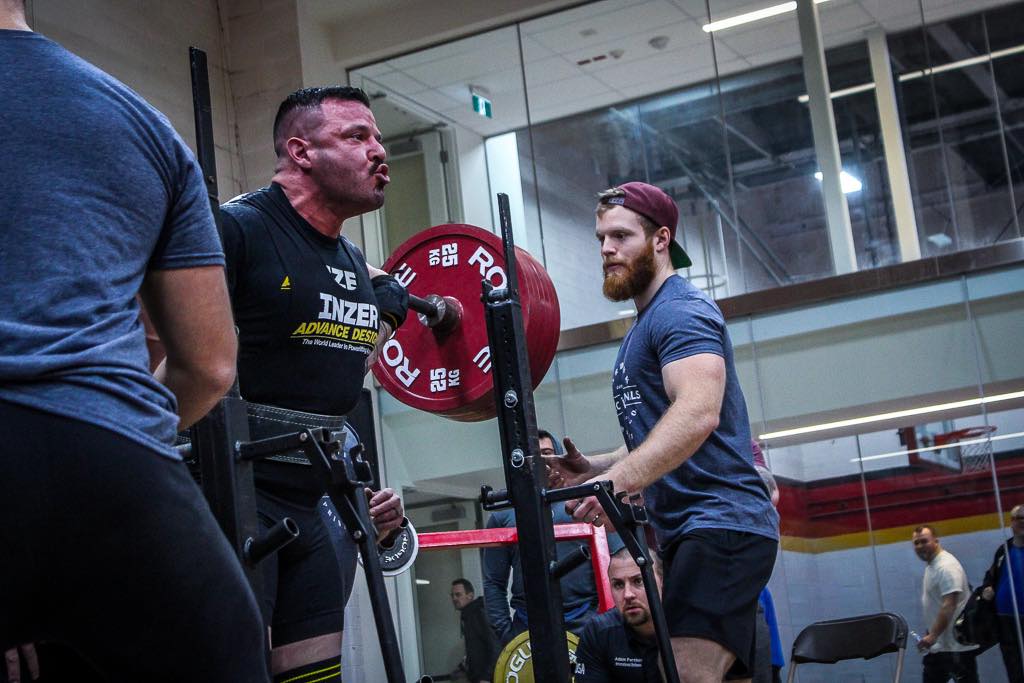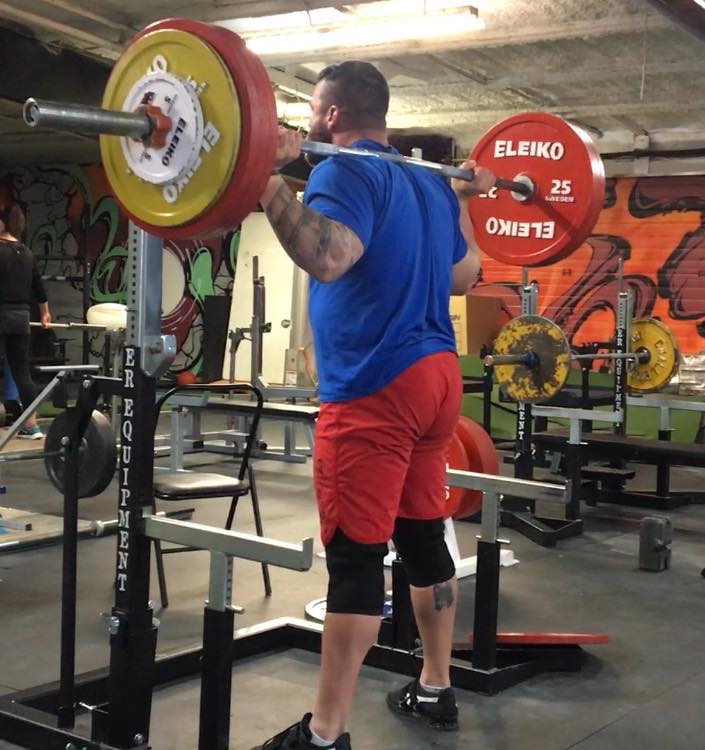
04 Mar A Proposition for a Paradigm of Planning Your Personal Periodization
By: Paul Oneid
Periodization is a concept that is widely accepted in the world of sports training. In broad terms, periodization refers to the organization of these phases into a macro plan. Training is organized in a phasic fashion, whether that be off-season/ in-season, hypertrophy/ strength/ power, regionals/ nationals/ worlds, training follows an undulating pattern to best prepare you for the demands of the sport you participate in.
We have known for quite some time that many processes within nature happen in a phasic fashion. Think about our circadian rhythm, the changing of the seasons, hormonal cycles, cellular mitosis, water/ nitrogen/ carbon cycles, etc. The world around us is always in a state of flux from one phase to another. Now, knowing this, how can you think it would be best to look at training in a vacuum? Periodizing training has the end goal of preparing the athlete for competition, so why would we not attempt to plan our lives in a way to leverage these cycles to enhance our performance, but also maximize our health? Enter the paradigm of “Personal Periodization.”
An important concept to remember is that whenever we spend too much time within one phase, the less carry forward we will have as we move on. There is a point of diminishing returns. Think about the lifter who preps for meet after meet. They spend too much time trying to showcase their strength and don’t spend enough time building it. Their gains slow and perhaps regress over time. So, this needs to be factored into your yearly plan. For the sake of simplicity, we will begin the plan immediately post-meet.
Post-Meet: Dial it down (This can last anywhere from 2-6weeks)
Goals: Decrease inflammation, get healthy, prepare yourself for a productive off-season.
Diet
Immediately following a meet, we want to focus our attention on decreasing inflammation. This can be done through diet with a great deal of success. Strategies such as eating in a caloric deficit, reducing carbohydrate intake (ketosis), decreasing inflammatory processed food intake, increase vegetable and fruit intake, decreasing stimulant intake, along with some strategic supplementation of adaptogens, such as Ashwagandha and Cordyceps mushrooms. This strategy will allow you to reduce cortisol, as well as serve to reset our insulin sensitivity. When focusing on performance, you should be prioritizing carbohydrate intake, which can decrease insulin sensitivity over time. Spending some time with lower carbs can help to mitigate this and allow you to benefit more from the additional carbohydrates when you reintroduce them.
Training
Immediately following a meet where training intensity is very high and volume is low, training should be focused on rehabilitation, movement quality and restoring patterns. This will be low volume and low intensity. Getting away from the competition movements and addressing any lingering issues that may have been aggravated during the highly specific training in meet prep. This will also serve to address the inflammatory issue mentioned above, as well as prepare our bodies for the reintroduction of training volume that is coming. Better movement means a better foundation to build from. Another important factor to consider is cardiovascular fitness. During this period, slowly re-introducing some low-intensity steady state cardio is a tremendous idea. Our fitness is typically quite low after a meet and doing some cardio will not only prepare us for more intensive training, but it will also keep our hearts healthy.
Lifestyle
This is perhaps the most crucial variable in the post-meet timeframe. During prep, we often neglect relationships, work, self-care, etc. These are things that we know decrease cortisol, the stress hormone. Spend time with family and friends, return to a regular workflow to catch up where you fell behind, ensure you are getting adequate sleep and do the things you do to feel better personally. These strategies can include reading, naps, meditation, walking (which should not be neglected during prep, but that is another story), evenings with friends, or date nights with your significant other. The goal here is to get away from the high strung sympathetic state of competition prep and return to a calmer and para-sympathetic neurological state.
Off-Season: Ramp things up (this can last anywhere from 10-20 weeks)
Goals: Increase muscle mass, improve fitness, address weak points
Diet
With the goal of increasing muscle mass, typically calories and carbohydrates will get ramped up to fuel more intensive training and support recovery. After the period of lower carbs, our body will be more apt to use the additional fuel productively rather than storing it as fat. This should be done gradually, adding small amounts every week, or two depending on your goals. A slow and steady increase in calories will be the easiest way to gauge progress. During this period, food variety should remain high to ensure a diverse microbiome. Food diversity is also key to maintaining a healthy appetite and improving adherence. You’re more likely to stick to a plan if you enjoy eating the foods you’re eating.
Training
Training should ramp up in terms of volume and intensity gradually throughout the off-season. During this period, you should choose more variation in movements and focus on targeting weak areas. More accessory work or bodybuilding should also be prioritized. This is where you build the foundation of strength to be showcased during meet prep. Nothing fancy here, just hard, monotonous work. Since hypertrophy is a very slow adaptation to elicit, more time must be spent addressing it to have carried over in later stages of training. Make sure you spend more time building strength than you do displaying it.
It will also be beneficial to continue to include cardiovascular training during the off-season. While it may seem counterintuitive to do cardio when you’re trying to put on muscle mass, it can serve to benefit you a great deal. Cardio will keep your metabolism ramped up to improve nutrient partitioning and help to maintain insulin sensitivity. Improved fitness will increase your rate of metabolic fatigue decay and recovery between sets and sessions to allow you to perform more work overall. Finally, cardio will keep you healthy and training longer than if you were a fat piece of shit. A good guideline would be to work up to performing five sessions of cardio per week with 1-2 of those being higher intensity, interval type sessions. Splitting these sessions into more frequent bouts seems to provide a better effect — for example, 4x 10minute walks vs. a 40 min walk in the morning, or evening.
Lifestyle
Since the “off-season” will comprise most of your year, your lifestyle here should be status quo. That is to say; it should be your version of “normal.” If you’re looking to make the most gains possible during this period, sleep and stress management should continue to be prioritized, but balance should undoubtedly be the goal. Put your training in its proper place within your hierarchy of importance. Cultivating strong relationships with family and friends and your professional goals would likely come before training. Make sure to put in those deposits, so that during prep when it’s time to withdraw, credits are remaining.
Meet Prep: Turn it up and dial it in. (this should last ~10 weeks)
Goal: Perform to the best of your capabilities on Meet Day
Diet
Dietary interventions should be geared strictly towards performance and recovery from training. Ideally, we should not be trying to manipulate bodyweight during meet-prep. We aim to control every variable we can, including the diet. A carb-cycling approach works very well in this instance. Training days are fueled with adequate carbohydrates, while decreased carbs on rest days allow us to control weekly caloric intake and keep insulin sensitivity in check. One often overlooked factor in the diet is food variety. When we are in periods of high physiological stress, our microbiome is affected. How many times have you noticed when you’re training intensely that your digestion feels “off?” Well, during meet prep, gradually reducing the variety in our diet will help to accommodate the stressors of training on the digestive tract. Foods that are easy to digest will be tolerated best. Stan Efferding’s Vertical Diet works well in that regard and fits the carb-cycling approach well. This will not only decrease inflammation, but it will assist with bringing down some bloat, which can help with making weight, should that be a concern.
Training
This is easy – things are going to get heavy! A planned increase in intensity weekly, combined with a strategic decline in volume over the 10(ish) weeks. Meet prep is not a time to pick new fancy movements or employ different strategies. Your accessories should be ones that you’re familiar with, can perform effectively and have demonstrated carry over for you. How would you know what those are? You should have been finding that out in the off-season when training variation would have been higher. If you’re looking for a tried and true template for a meet-prep, grab a copy of 10/20/Life Second Edition.
In terms of aerobic/ conditioning work, the intensity of this should be cut down to a minimum, especially in the final 4-6 weeks of prep. Keeping some walking, or light bike can be very beneficial for recovery between sessions, but there is a fine line of what is “too much.” Typically, 2-3x 10 minute walks are plenty to maintain enough fitness and facilitate recovery.
Lifestyle
The degree to which you manage your lifestyle will be very individual. In an ideal world, during the final weeks of a meet prep, everything should be focused on the recovery from training. Stress levels from work and family should be minimized, and your mind should be focused on one thing – the performance you’re preparing for. Now, for most people, this is impossible. We have jobs, families, and responsibilities. What we can do is lean on others. If you’ve put in the social credits during the off-season, you can cash them in when you need them. Ask for help, time, support. Now, if competing is a hobby and not something you’re doing to be the best in the world, merely dial this back and prioritize some relaxation time. You don’t have to be “all in” if this is not the most critical thing in your life.
Take-Home
This exercise was aimed to give you things to consider when taking a more big-picture look at your training. It does not and cannot exist in a bubble. The 2hrs you might spend training per day can be significantly enhanced by the approach you take in the other 22hrs. If your training is periodized or phasic, why shouldn’t your diet and lifestyle? Sometimes, merely planning can make a profound difference in your performance and health outcomes.
To follow read more from Paul and to follow his training CLICK HERE. To learn more about how to periodize your training and your lifestyle, Brian Carroll expounds quite a bit in 10/20/Life Second Edition. You can grab your own copy HERE
Paul Oneid
Latest posts by Paul Oneid (see all)
- A Proposition for a Paradigm of Planning Your Personal Periodization - March 4, 2019
- Paul Oneid –> Off-Season | Feet Up Bench PR and Some Squats - March 1, 2019
- Paul Oneid –> Off-Season | A bit of everything - February 21, 2019








Sorry, the comment form is closed at this time.